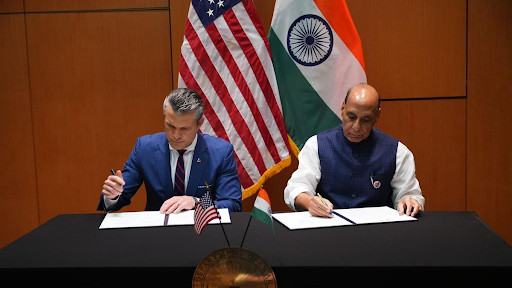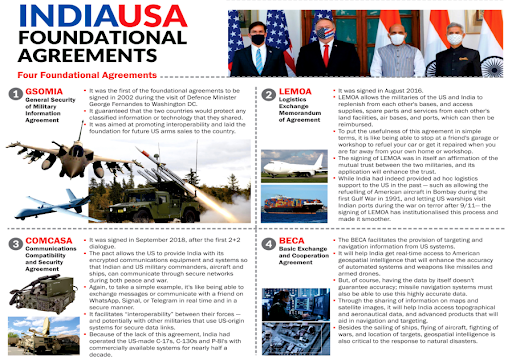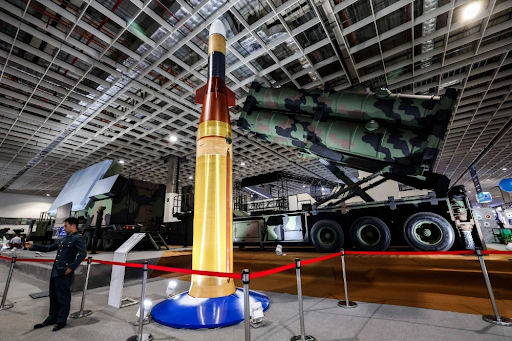



India and the U.S. strengthened their strategic ties with the 10-year “Framework for the U.S.-India Major Defence Partnership” signed in October 2025. The pact enhances cooperation in technology transfer, intelligence sharing, joint exercises, and defence production, reinforcing regional stability and a free, open Indo-Pacific.

Copyright infringement not intended
Picture Courtesy: THEHINDU
The “Framework for the U.S.-India Major Defence Partnership” was signed by Defence Minister Rajnath Singh and U.S. Secretary of War Pete Hegseth on the sidelines of the 12th ASEAN Defence Ministers’ Meeting-Plus (ADMM-Plus) in Kuala Lumpur, Malaysia.
|
Read all about: INDIA'S STRATEGY AGAINST US PRESSURE l INDIA'S STRATEGY ON US TARIFFS l USA-CHINA RELATIONS: CHALLENGES AND OPPORTUNITIES FOR INDIA l INDIA-US RELATION UNDER TRUMP 2.0 |
The India-US defense relationship, once minimal during the Cold War due to India's non-alignment, began to transform in the post-Cold War era.
In 2005 New Framework for the US-India Defense Relationship, laid the groundwork for enhanced cooperation.
In 2016, India's status was elevated to a "Major Defence Partner" by the United States, allowing for defence trade and technology sharing comparable to closest allies, despite India not being a treaty ally.
In 2018 India gained Strategic Trade Authority-1 (STA-1) status, granting license-free access to advanced dual-use technologies.
Foundational Agreements between India-US

The recent 10-year 'Framework for the US-India Major Defence Partnership' outlines a roadmap for deeper military collaboration, joint initiatives across the Indo-Pacific region, and enhanced coordination, information sharing, and technology cooperation.
The India-US defence partnership grew from $1 billion in 2008 to over $20 billion by 2023, driven by shared geopolitical interests.
Defence Trade and Technology Collaboration
Strategic Dialogue and Coordination:
Drivers of Deepening Partnership
The India-US defense partnership is a robust and evolving engagement, characterized by converging strategic interests, growing trade, joint exercises, and dialogues, aiming to ensure stability and a rules-based Indo-Pacific despite historical challenges and technology transfer barriers.
Source: THEHINDU
|
PRACTICE QUESTION Q. "While the India-US strategic convergence in the Indo-Pacific is growing, India's commitment to strategic autonomy presents inherent challenges." Discuss. 150 words |
Both nations are key partners in the Quadrilateral Security Dialogue (QUAD) alongside Japan and Australia. They are committed to a free, open, and rules-based Indo-Pacific region and collaborate on maritime security, counter-terrorism, and infrastructure projects to counter challenges, particularly from China's assertiveness.
Under the U.S.-India COMPACT Initiative, the "Mission 500" goal was launched to more than double the total bilateral trade between the two countries to $500 billion by the year 2030.
Launched in 2023 and rebranded as the U.S.-India TRUST initiative in 2025, iCET is a key initiative led to promote innovation and cooperation in critical technology domains like AI, semiconductors, quantum computing, space technology, and defense.







© 2025 iasgyan. All right reserved